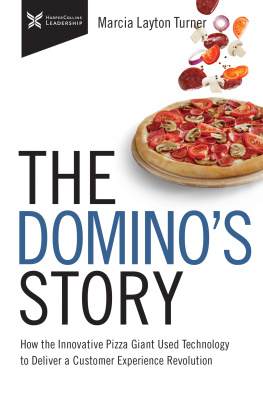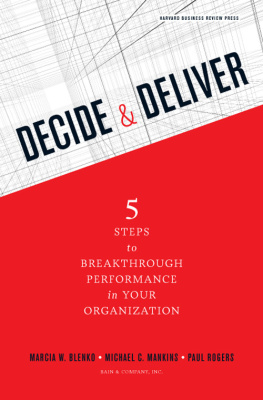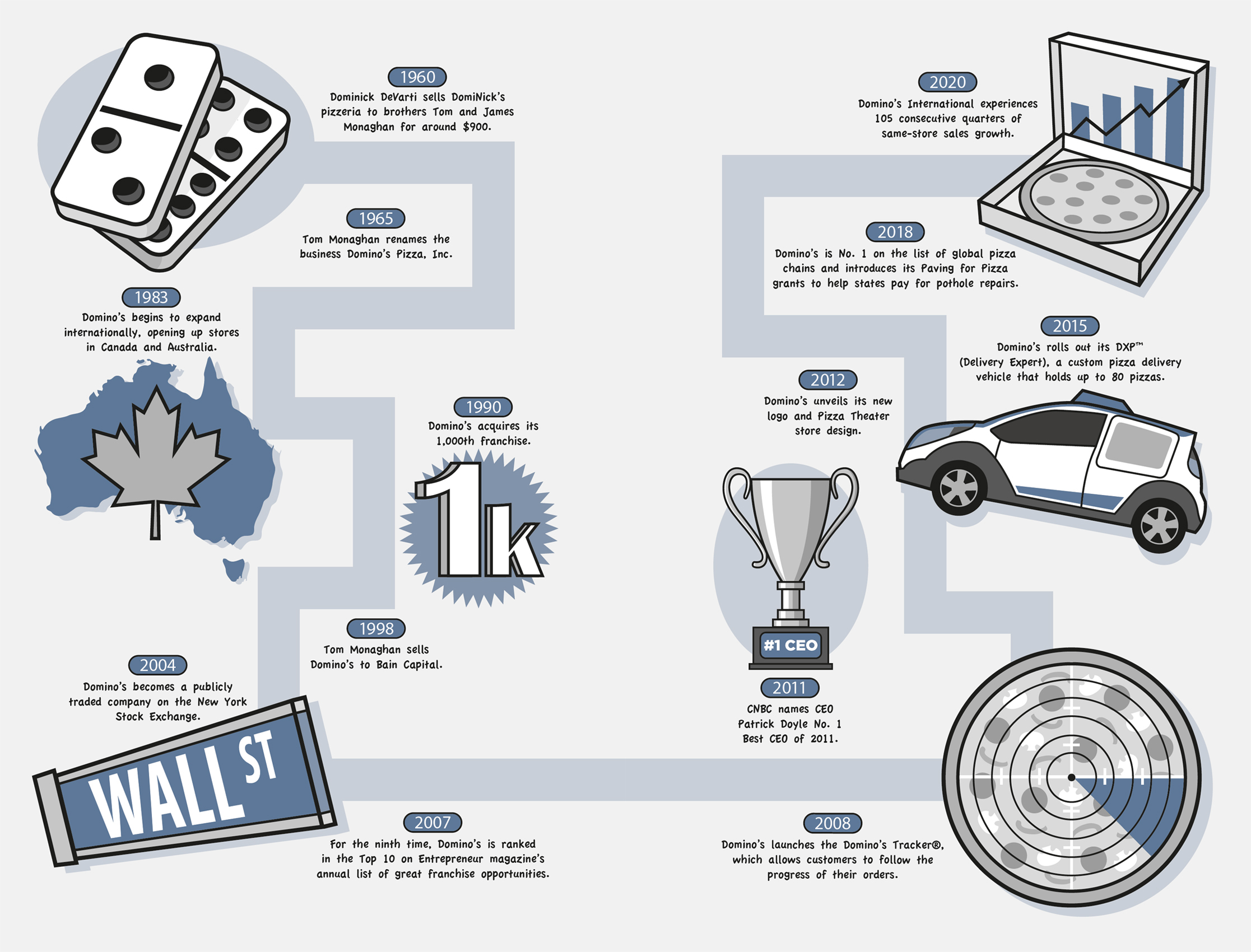2020 HarperCollins Leadership
All rights reserved. No portion of this book may be reproduced, stored in a retrieval system, or transmitted in any form or by any meanselectronic, mechanical, photocopy, recording, scanning, or otherexcept for brief quotations in critical reviews or articles, without the prior written permission of the publisher.
Published by HarperCollins Leadership, an imprint of HarperCollins Focus LLC.
Published in association with Kevin Anderson & Associates: https://www.ka-writing.com/.
Book design by Aubrey Khan, Neuwirth & Associates.
ISBN 978-1-4002-1880-6 (eBook)
ISBN 978-1-4002-1879-0 (HC)
Epub Edition August 2020 9781400218806
Library of Congress Control Number: 2020943544
Printed in the United States of America
20 21 22 23 LSC 10 9 8 7 6 5 4 3 2 1
Information about External Hyperlinks in this ebook
Please note that the endnotes in this ebook may contain hyperlinks to external websites as part of bibliographic citations. These hyperlinks have not been activated by the publisher, who cannot verify the accuracy of these links beyond the date of publication
For Dominos #1 fan, my daughter Amanda.
CONTENTS
Guide
Without the help of skilled researcher Elizabeth King, theres no way this story could have been told in its entirety. Thanks also to Amanda Turner for her help with information gathering, to Sandy Beckwith for her eagle editing eye, to Dominos employee Kerstin for the frequent deliveries of a handmade pan pizza and eight-piece boneless chicken, to Jacob King for keeping the project on track, and Kevin Anderson for the opportunity to write this book.
T he story of Dominos Pizza is a true rags-to-riches tale, full of determination, innovation, and ambition. It involves a long-term vision for a business that would become a global corporate leader, creating jobs and supporting the local economy. In the present day, it includes a creative, technologically adept team committed to building a successful enterprise that has risen to the top of the charts for its industry.
The story begins with Thomas Stephen Monaghan, first son of Frank and Anna Monaghan, born in 1937. To understand how Dominos was founded and built, you first have to understand Tom Monaghans upbringing and early experiences, because they shaped his goals and mind. A self-described exuberant child, full of energy, Monaghans earliest memories are of life in Ann Arbor, with his brother, Jim, two years his junior; a patient, loving father; and a mother who was a good bit less patient, he relates in Living the Faith, a biography of his life.
What shaped his life perhaps more than anything else was the sudden death of his twenty-nine-year-old doting dad to peritonitis, due to ulcers. Even after a lump-sum payment from Franks life insurance policy, Monaghans mother could barely make ends meet. She moved her boys into town and got a job at the Argus Camera Company, but with weekly earnings of $27.50 and expenses of $30, she knew she had to find a better solution.
That solution was to put her sons into a foster home. They first stayed briefly with one family before being moved for a two-year stint with the Woppmans. However, when Monaghan was around seven, the Woppmans decided he was just too much for them, and returned both boys to their mother.
Around that same time, Anna Monaghan decided to go back to school to become a nurse. Her plan was to place the boys in Catholic boarding school until she earned her degree, and then they would come live with her again when she was making enough money to afford their care. In the meantime, Tom and Jim Monaghan went to live and study at St. Josephs Home for Boys, which was both a school and an orphanage.
Although he was intensely unhappy about my strange new surroundings, And with that, its likely Monaghan decided he would do just that.
On reflecting on her influence, Monaghan acknowledged how important that relationship had been. She became my surrogate mother, and I flourished under her care. His own mother worked at the hospital a few blocks away and had an apartment close by, so the boys often visited on weekends, Monaghan recalls. While he excelled in second grade with Sister Berardas support, when he and Jim were transferred to the local Catholic school in third grade, things took a turn for the worse. The environment was harsh, with whippings common for the smallest infraction, he says, and his grades and attitude fell during his time there. Yet, during those four years, he also says he learned the value of hard work and of not giving up. If something doesnt work, you try another way. You cant fail. Those teachings certainly served Monaghan well later at Dominos.
He told his second-grade class that he was going to be a priest, an architect, and shortstop for the Detroit Tigers. Although his classmates laughed, Sister Berarda assured him, I dont think its ever been done before, Tommy, but if you want to, theres no reason you cant.
Back Together
Finally, when Monaghan was in sixth grade, Anna Monaghan took the boys from St. Josephs and moved north to Traverse City, Michigan, where she had a job and had bought a house. Suddenly, Monaghan had more freedom than hed ever experienced, since his mother worked long hours at the hospital. In seventh grade, he enrolled at Immaculate Conception Catholic school and then spent his summer working to earn money through odd jobs. He had already figured out that money was critical to having more freedom, so he sold papers downtown and then vegetables door-to-door to earn some cash.
But after returning from a visit to Monaghans aunt and uncles place in Ann Arbor that summer, Anna decided she just couldnt handle him anymore, so she once again placed her sons in foster care. In and out of a few families, when Monaghan began ninth grade at St. Francis High School, he was sent to live on a farm and his brother went back to live with their mother. One of Monaghans jobs on the farm netted him a paycheck of $2 a week, which he was thrilled about. The house was drafty and he did his homework in the kitchen by the light of a kerosene lamp, then spent his free time reading catalogs, dreaming of the day that he would be able to afford the best of everything. He was going to be rich and famous, he told his friends. And they believed him.
However, he soon had a revelation, due in part to his desire to return to the rituals and routine he had become accustomed to at school. In his freshman year, he says in his book, I saw that I had been wallowing in crass, worldly thoughts when I should have been concentrating on my spiritual quest. I decided then and there that I would become a priest.
With help, he applied to St. Josephs Seminary in Grand Rapids, Michigan, and was accepted. He was thrilled, but he only lasted a year there, not due to poor conduct, but because his mother complained to the rector that he wasnt writing home enough. He admits that he didnt write to her as often as other kids wrote to their mothers, but he never would have thought that would get him kicked out of seminary. He was devastated at being asked to leave, and Anna was shocked that her letter had brought him back to her. She hadnt bargained on that.
After another stint in a foster home, Anna had him remanded to a juvenile detention center, until Monaghans aunt found out and effectively bailed him out, bringing him home with her to Ann Arbor. He says his time with them was the first time since his fathers death that he was leading a normal life.
Next page






